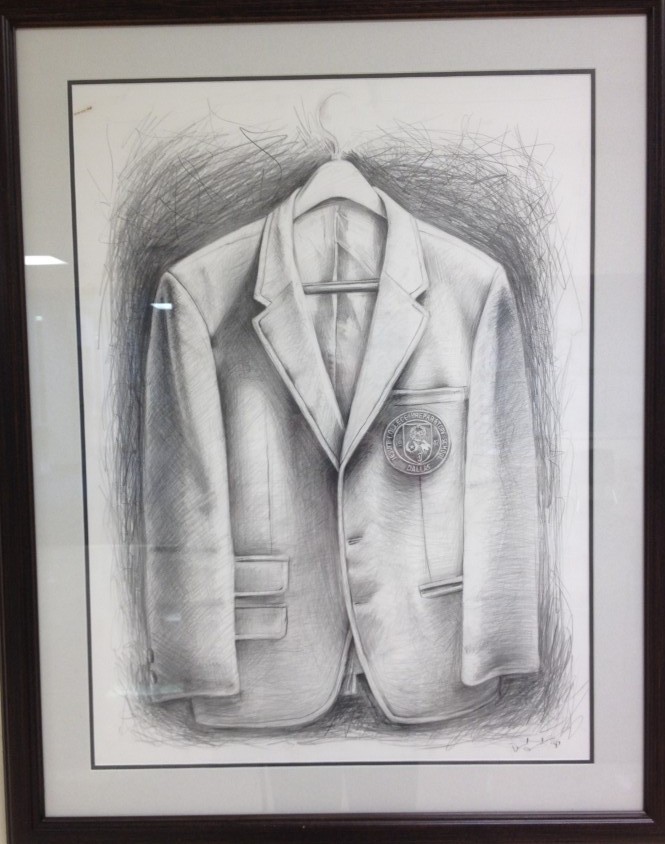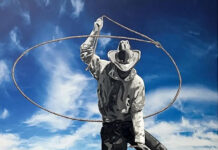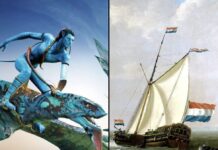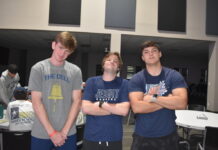Take a moment and imagine yourself strolling down the B hallway en route to next period’s class. This ordinary daily task seems incredibly automatic as students and faculty walk down the hallway like a network of ants speeding along their dirt highway. Despite the multitude of small distractions in the hallway, a certain sketch always seems to catch the eye. Rather than worn by a student, the blazer of artist David Quadrini ’85 “hangs” in a picture frame and bears the well known seal of our community.
As mentioned in “Jesuit Welcomes New Museum Director,” the tuition at Jesuit comes bundled with a free museum tour. Principal Tom Garrison acknowledges the museum as a “wonderful gift; unique like no other school” and that it “expands upon the students’ experience.” Likewise, Rhodes “Nash” Evans ’17 agrees that the museum creates “a better environment for the students. It provides a different atmosphere and a certain place to stop and wonder by balancing school work with beauty.” Undoubtedly, the museum as a whole enriches the minds of those on campus and acts as a nice and calming “escape” from the haste and stress daily life.
Fr. Clyde LeBlanc S.J., a Jesuit Museum founder and Jesuit’s president from 1982-1986, asked him to create one last piece of art before leaving the Jesuit community, and Mr. David Quadrini finished the sketch of the blazer in the final days before he left for college in 1985. “I made it to leave something behind, so I intended it to be the best piece,” Quadrini reflected. “It is one of my favorite pencil drawings.” He believes that the blazer represents the perfect image of everything about Jesuit, especially identity. In his experience at Jesuit, the students both hated and loved the blazer, for it was physically restraining but represented a communal bond between the students. Principal Garrison, Mr. Rob McGhee, and Nash agreed with Quadrini as they interpreted the blazer as a reference to the identity of Jesuit, visualized by the eye-popping emblem on the side pocket. While Principal Garrison and Mr. McGhee view the blazer as a personal reflection and a throwback uniform of what they wore at Jesuit, Nash sees the theme of transformation within the blazer. “[The blazer] shows how Jesuit has changed,” he said. “The same concept exists in a way through great education and Jesuit’s idea of community, but the blazer presents it with a different covering.”
In addition to its symbolism, the blazer also expresses phenomenal design. Jesuit Museum Director Mrs. Elizabeth Hunt Blanc, who has come to know Quadrini from openings in his renowned Angstrom Gallery, praises the piece for its artistic line work comparable to that of other famous artists like Ed Singer. Oddly enough, Quadrini himself claims to have sketched the blazer with scribbles and jagged lines, but perhaps the messiness all forms a pattern that becomes a realistic blazer. Other works of art by Caravaggio, Quadrini’s favorite artist, and other pop artists such as Jim Dine inspired him to create “something that was still, quiet, and an object that everybody could relate to.”
Mrs. Hunt Blanc stated that the area around the piece displays student art, but the central and significant position of the painting indeed ties back to its central theme: identity. “I was there at Jesuit right before they started to collect,” Quadrini remembered, “and it makes me so happy and proud that it’s seen by all!” No matter who enters the building, anyone can observe the blazer and recognize the values held by Jesuit, values determined by the its success, past, and future.






